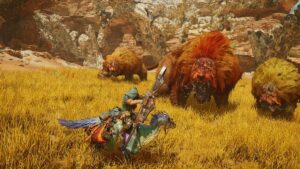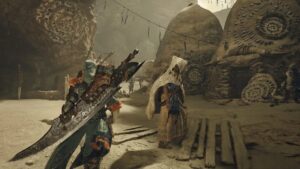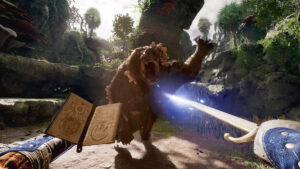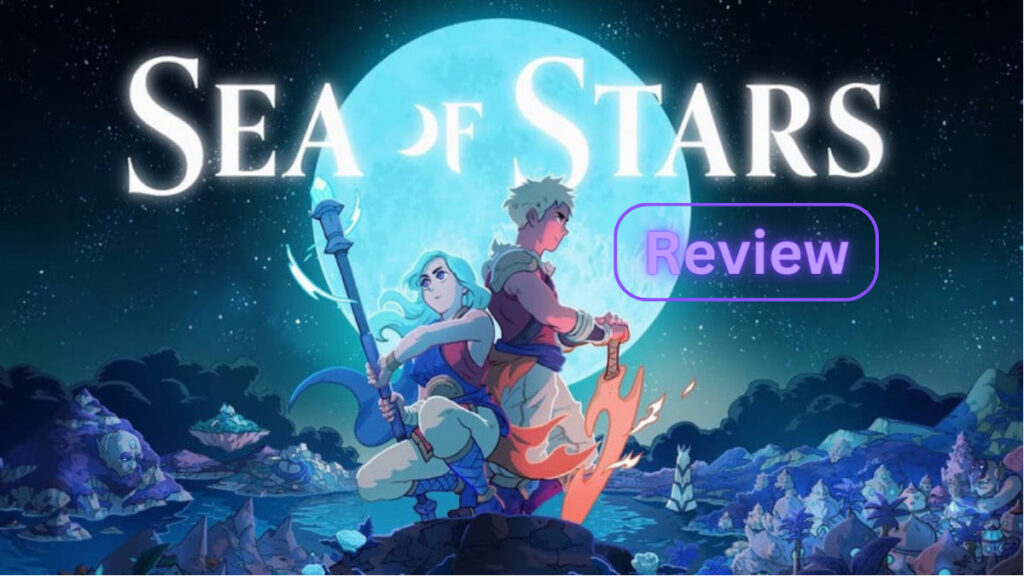
Image source: Sabotage Studio
Sea of Stars Review on PlayStation 5
Last year, if you’d told me that 2023 would herald a game with a singing plant level and another with a warbling mushroom one, well, I’d probably have been nonplussed, to be honest. But it’s an indisputable fact that musical stages make any game better, so when the ambitious indie RPG came along with serenading fungi, I had to give it a try. So, here’s our better late-than-never Sea of Stars review.
And I’m glad to report that Sea of Stars, developed and published by Sabotage Studios, gets an awful lot right, full of the charm and whimsy that typified the 16-bit RPGs of the ’90s. That’s not to say, however, that there isn’t mushroom for improvement.
Music Matters
I’d usually start a review by focusing on the core gameplay components, or perhaps the story premise. Not this time. I need to immediately draw your attention to hands down the best of Sea of Stars‘ facets: the soundtrack. Primarily composed by Eric W. Brown, Sea of Stars‘ OST features banger after banger. From upbeat, seriously hummable town music to the toe-tapping, synth-heavy epicness of the boss themes, each track doesn’t just complement the gameplay, but actively elevates the entire experience. The musical score really is that good, and I’d highly recommend picking it up if you’re even remotely interested in quality video game soundtracks.

The Sky’s (Not) the Limit
When it comes to Sea of Stars‘ gameplay, Sabotage Studios have sensibly blended nostalgic 16-bit era mechanics with modern innovations. Controlling one of two primary protagonists, you explore a world map that initially starts small and compact but, in typical old-school RPG fashion, quickly opens up to span new islands, continents, and even worlds.
The mode by which you navigate the world map is slow and clunky by design, with only the four D-pad directions available. This in itself isn’t egregious — a harmless nod to the 16-bit era — but the fact that faster traveling options only really open much later into the game is a bit of a let-down. I would’ve preferred to have the option to zip around the world map at a much earlier stage when I was invested in unearthing its secrets.
As Fluid as the Waves
Sea of Stars‘ levels are where the bulk of the gameplay occurs and where the game really shines. Eschewing the clunky world map movement in favor of fast, free-flowing running, jumping, and climbing, your companions follow you as you dart around levels with pleasing fluidity. I found that the perspective sometimes made navigation confusing, rendering me unable to quickly distinguish background from foreground. This was a particular problem because Sea of Stars’ levels feature extensive verticality, with paths crossing back over each other. In addition, one level was plunged in a darkness so deep that I literally couldn’t see where I was going. Perhaps I missed a key item, but my only recourse was to ratchet up the brightness to the max to escape that cave of frustration.
While the main path is often clearly-signposted and intuitive, on a few occasions I found myself befuddled by multiple similar-looking branches. The puzzles that populate many of the level’s rooms are usually on the simple side, though a few gave me that pleasing rush of insight when my tired brain finally solved the conundrum.
Wait Your Turn, Punks!
The other thing that the levels are teeming with, unsurprisingly, are enemies keen to chew on your parties’ faces. Most of the time, the enemies roam the levels themselves, springing into action if you venture too close but giving you the chance to avoid them. On a few too many occasions, however, I found myself ambushed with seemingly no chance to evade or foresee the encounter, leading to some frustrating game overs.
Sea of Stars turn-based combat follows standard yesteryear RPG tropes, with basic attacks, magic attacks, item usage and special attacks all present and correct. Timers denote how many turns will pass until each enemy attacks, with the player able to choose the order in which their battle party of three acts.
Locked in
Where Sea of Stars innovates, however, is with the lock mechanic. Enemies can perform special attacks, which require a number of attacks of a specified type to disrupt. It’s a neat system, on the whole, introducing a layer of planning and complexity that the battles would otherwise lack. The downside, however, is that sometimes it seems literally impossible to string together the attacks required to disrupt the attack. Again, it’s a minor frustration, but a shortcoming nonetheless. Another issue is that there’s no option to even attempt to flee battles. Once you’re in one, that’s it, win or lose. It’s a strange decision given that a flight option is common in many of the 16-bit RPGs that inspired Sea of Stars.
It helps, then, that the battles pit your party against an eclectic, imaginative roster of bloodthirsty creatures and imposing bosses. The wonderfully-catchy battle themes help in this regard, but there’s no denying the creativity that’s gone into creating Sea of Stars‘ enemies.
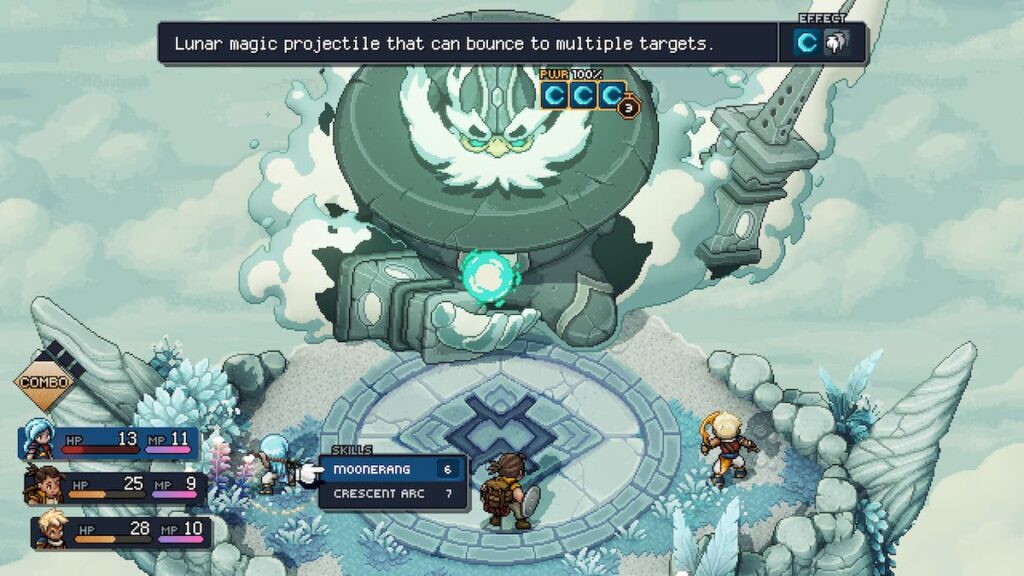
In fact, creativity and imagination is evident in so much of Sea of Stars‘ design and aesthetic. It looks, to put it plainly, absolutely gorgeous, the vibrant color palette popping with the pixel art. The various environments, from frigid mountain slopes to underwater temples, all the way to a clockwork castle and the aforementioned singing mushroom stage, are all bursting with inventiveness. In some ways, it feels like Sabotage Studios are RPG veterans, rather than newcomers, coming off the back of their 2D platformer, The Messenger.
Deus Ex MacGuffins
Well, it would do, if it weren’t for the previously-mentioned gripes and my biggest issue of all: the story. Sea of Stars starts off well: our protagonists, Valere and Zale, are trainee Solstice Warriors with the magical power to take down big, nasty monsters called Dwellers. These monstrosities were left by the guy who wins the award for most-ominous-sounding-title: the Fleshmancer. So, after some training, Valere and Zale head out to do just that.
It’s a serviceable plot, no doubt, but our heroes’ goal never feels particularly compelling or personal to them. The storyline meanders between various MacGuffin-centric beats, doing a disservice to the colorful roster of NPCs you meet along the way.
Even the Warrior Cook Struggles to Season the Story
If it weren’t for the non-Solstice Warrior companion and ever-cheerful Warrior Cook, Garl, the emotional stakes would be almost non-existent. Garl’s bubbling personality goes a long way to giving Sea of Stars heart, but his effervescence only further highlights how drab Valere and Zale themselves are. The duo just drift through the story, often letting Garl do the talking, and mostly merely resorting to laughing at the characters they encounter. It feels tonally off given their huge responsibility, and a disappointing misstep when the world Sabotage Studios created is so brimming with life and lore.
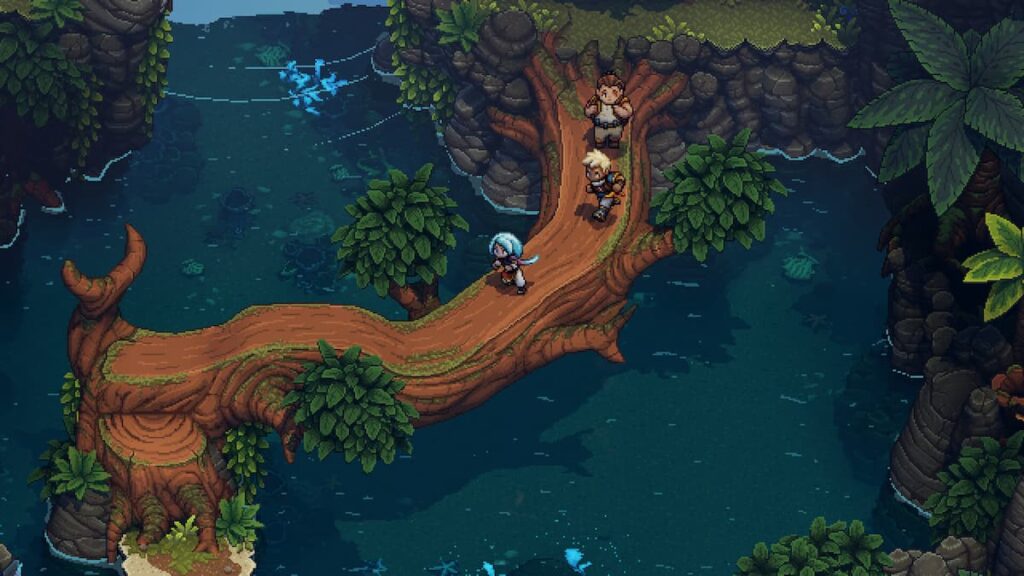
That’s not to say there aren’t a few narrative turning points, some of which I didn’t see coming and provided some much-needed story momentum. But, unfortunately, these twists are too few and far between, meaning the major plot beats are stretched far too thinly over Sea of Stars‘ 30-hour plus run time. Not to give too much away, but the last third of the game takes the heroes into a completely new world with new locales, NPCs and quests, in what feels like a DLC expansion rather than a continuation to the story.
Moving Up in the World
Of course, Sea of Stars wouldn’t be a self-respecting RPG if it didn’t have upgrade mechanics. Your party members’ attributes increase automatically when you level up, with the option to enhance one of three attributes a little further, lending you a small degree of agency. In addition, there are new spells and powerful attacks to find and learn, some of which, such as each character’s ultimate attack, are a feast for the senses.
Less impressive, however, are the weapons and armor that you acquire. More often than not, it’s just a case of finding and equipping an item with better base stats, with little requirement for optimizing your party or making difficult compromises. Similarly, the attacks that you acquire come quickly toward the start of the adventure, but quickly tail off, reducing the sense of progression and excitement of finding new abilities.
Summary
In summary, Sea of Stars is an incredibly ambitious RPG from a small studio, and quite clearly a labor of love. It shoots for the stars, but a few level design and combat frustrations, coupled with a meandering, overly-stretched plot and bland main characters, means it doesn’t quite make it into orbit. That said, it builds on its retro-inspired foundations with such charm and bold invention, that Sea of Stars‘ landing is definitely closer to a graceful swan dive than a painful belly flop.
Highlights
- Stunning soundtrack
- Gorgeous aesthetics
- Innovative combat lock system
- Creative enemy and boss design
Shortcomings
- Meandering plot stretched too thin
- Bland central protagonists
- Occasionally frustrating combat and level design
We Game Daily’s Sea of Stars review was written by editor Tom Killalea.
